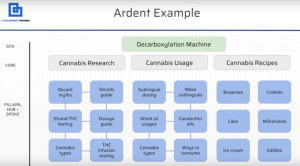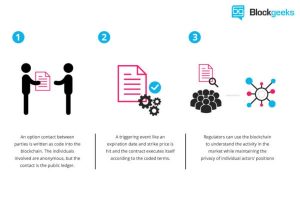
The end of the calendar year is usually a good time to conduct a simple marketing review. As part of that review, take a hard look at your website to ensure it is an effective hub of all of your marketing efforts. Use the following website review checklist to walk through the important areas of your website, including design, content, SEO, security, device support and performance.
10 Point Website Review Checklist
Whether you are reviewing your current website, a new revision or starting from scratch, these areas are important to ensure you gain quality traffic and generate the leads your business needs to succeed. Your website needs to work for your marketing efforts, ensuring it attracts, educates and converts your visitors into leads.
1. Content focuses on the needs of your target audience
As business owners, we are often too close to our businesses to objectively view what makes our clients appreciate what we do. Our content ends up focusing on us and our products and services rather than relating what we sell to the problems we solve and why.
Your content should demonstrate how your business can help your visitors better than anyone else.
A clear headline that tells your visitor that you really understand them can stop them from hitting the back button and entice them to find out more. The entire website should have content that:
- Speaks to your visitors about their challenges and shows that you can relate.
- Tells a story on how you solved that same problem.
- Shows who you are by revealing your vulnerable side, past successes and social proof.
Review your main content areas to make sure you are relating to your target audience, connecting with their wants and needs and demonstrating that you understand them better than your competition.
2. A clear call to action is visible on every page and post
Most small business websites have no call to action (CTA), resulting in visitors leaving without establishing some type of connection with your company. Since you’ve implemented marketing strategies to drive visitors to your website, shouldn’t you also implement some type of call to action to elicit an immediate response?
CTAs are key to generating leads by leading your visitors down the path you want them to take.
Be clear about what you want your visitor to do and create your call to action to drive the outcome. Don’t leave it to chance that your visitors know what you want them to do and actually do it. Lay out the path for them to begin the process of converting into a lead.
3. Contact page is well designed and prominently displayed
For most businesses, one of the most visited pages on your website is your contact page. But most businesses add a basic contact page quickly and without much thought.
A well-designed contact page can help you generate leads and develop relationships with potential customers.
It can assist the visitor in reaching out to you for help, turning them from casual browsers into interested parties.
Besides being easy to find, the best contact pages:
- Make it easy for users to directly connect with you by simply tapping a phone number, known as click to call.
- Have a short, easy to use contact form so people can contact you 24 hours a day.
- Include directions to your business if you have a physical presence.
- Set expectations on when they can expect to hear back from you and how.
- Work on a mobile device.
- Link to active social media accounts to give visitors other ways to connect with you
Depending on your business, you may want to include a:
- Frequently Asked Questions section on the page to answer common questions.
- Chat box to take questions in real time.
Don’t overlook your contact page for its value to your website conversions. A well-designed contact page can entice visitors to begin a long-term relationship with you.
4. Design is professional and complements your brand
You only have a few seconds to impress and capture your visitor’s attention. If your website design looks dated, visitors may assume your business is out of touch or worse, out of business. Your website needs to be eye-catching while communicating your value to your target audience.
A good design supports your content, not the other way around.
Modern websites sport clean design and full width layouts enticing people to explore it further. Content is formatted with headers, bullets, lots of white space and larger fonts to help the reader scan for what is important. Visuals are more prominent. Text is concise but educational.
Like everything in marketing, your website has to work for your business. Just because parallax scrolling and long scrolling pages are trendy, it doesn’t mean it is the right thing for your business. Choose a design that works with your brand.
5. Navigation is simple and easy to follow
If people need to search for what they are looking for on your website, you’ve already lost them. Content needs to be organized in a way that people can find what they are looking for without digging too hard. Multiple clicks to get to where they need to go will only lessen your chances of them staying and finding out more about what you have to offer.
When it comes to website navigation, the simpler the better.
Navigation should be simple, text-based links that make it easy for visitors to use your website. Keep in mind that most users are searching from a smartphone or tablet and may be shown alternative navigation schemes.
6. Website supports all devices and screen sizes (mobile responsive)
As more people ditch their desktops for tablets and smartphones, your website needs to function and perform well on any screen size.
More than half of all searches on Google come from smartphones, making Google’s focus on the mobile user experience, both in usability and performance, a primary objective.
In addition to providing responsive design, your website should also support Accelerated Mobile Pages, an open source initiative that improves the mobile experience by speeding up page load times. WordPress plugins are available to add AMP support to your website.
When testing your site, make sure images respond to the device properly, the navigation is easy use and all the pages load quickly and render properly, regardless of the device.
7. Website is fully optimized for better online visibility
Optimizing your website ensures your webpages are found in the search results.
Great content is useless if it can’t be found by those searching.
For on-page optimization, the important areas to address are:
- Optimizing pages and posts using one unique keyword to help search engines index them properly
- Crafting a meta description tag to entice the searcher to click on your link in the search results
- Writing content for the human using your keywords appropriately
Your eye-catching images help capture the interest of your readers but they too, need to be optimized for SEO and performance.
Creative visuals can keep visitors on your page longer and encourage them to browse other content on your website.
Adding images to your website requires that you pay attention to image optimization. When selecting images:
- Choose images that support your content in some way.
- Be creative and either create your own or get quality images from a stock photo source.
- Resize images properly so that your page loads quickly.
- Rename your images using the major keyword for the content.
- Include alt tags for all images using your keyword phrase
Image optimization is an easy but important task that can help your images get indexed and lead visitors back to your website.
8. Website pages load quickly
Page load speed matters and can affect your website’s visibility in search engine results. People are impatient. If your website speed doesn’t meet the patience criteria of the visitor, they will hit the back button, sending a signal to Google about the quality of your user experience.
Areas that affect page load speed include:
- Hosting provider. Shared hosting can cause a slower website if the host isn’t optimizing their servers for WordPress. Look for a web hosting company that offers optimized WordPress hosting.
- Heavy images. Never upload original images from your smartphone. Reduce the size of the image by resizing them for the web and reducing their size via compression. SmushIT plugin for WordPress reduces image file sizes, improves performance and boosts SEO.
- Slow plugins. Plugins are essential to building a quality WordPress website, but using plugins that are not well coded can slow down your website. Opt to use premium plugins and eliminate those you absolutely don’t need.
- Complicated WordPress theme. As with your plugin choices, picking a WordPress theme will have performance implications. Choose wisely or seek help from someone who can objectively advise you on your selection.
Although you may not be able to make the changes you need to achieve a faster website, you should understand how your website performs and seek help to make the changes you may need to ensure a fast page load time.
9. Website has an SSL certificate installed
Google is encouraging the use of SSL certificates on all websites to raise awareness of online security issues.
Even if you are not selling products via your website, your website will benefit from having an SSL certificate installed. Adding SSL will:
- Add a level of trust to your website when visitors share personal data with you through your contact forms. A website with SSL has a visible cue, a green lock, that indicates that the page is secure. The next release of the Chrome browser will include a more visible warning when websites are not encrypted, which could result in visitors leaving your website quickly.
- Give your website a slight SEO advantage over those without SSL. Since Google is pushing hard to get websites to convert to HTTPS, future impact on your search engine ranking could be larger.
Setting up SSL for your website should be on your to do list for early in this coming year. Check your website hosting company’s offerings for SSL. Many now offer one-click installs and free Let’s Encrypt certificates that make adding the certificate to your website easier and more cost-effective.
Once the SSL certificate is installed, however, you have work to do. You need to redirect HTTP to HTTPS, add the HTTPS version of the website to Google Analytics and Search Console and convert all internal links to HTTPS. Make sure you get someone to help you if you’re not sure of the steps involved.
10. Security is implemented to avoid hacking incidents
There are many areas to look at when determining whether your website is secure. Things to consider are:
- Removing administrative accounts that use the username “admin”. Hackers look for that username to start their hacking effort.
- Having a clean backup in case the website gets compromised. If something does happen to your site, having a backup that can be restored to a clean install of WordPress can minimize downtime.
- Installing a security plugin. There are several quality WordPress security plugins that protect your website. Consider All in One WP Security, Ninjafirewall, iThemes Security, Wordfence Security and Securi Security. Personally I like Ninjafirewall and All in One WP Security. All can be found in the WordPress plugins directory.
Next steps
Your website is a mandatory marketing tool that is the central focal point for all of your marketing efforts – both online and off. Use this website review checklist to evaluate your website. Then you can be confident that your website fulfills its role, attracting the right audience and converting them into quality leads.
What do you think should be included in a website review checklist?
Digital & Social Articles on Business 2 Community(66)






